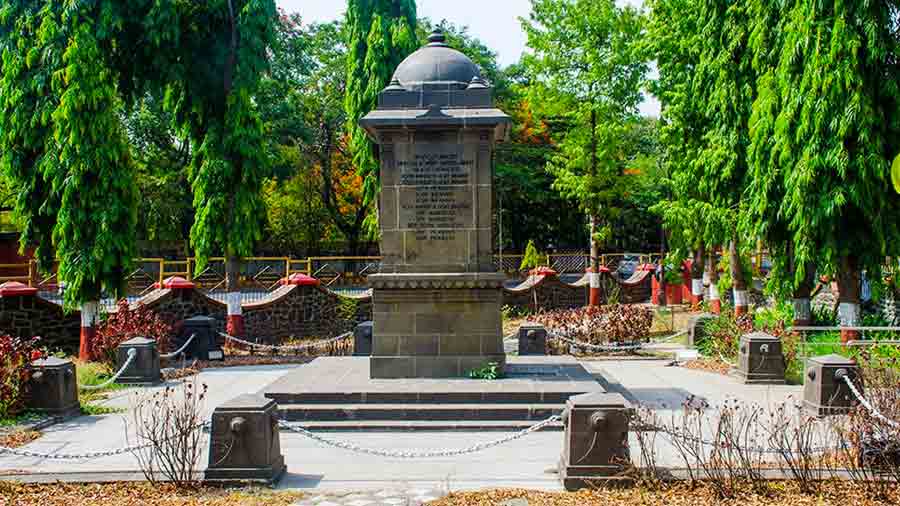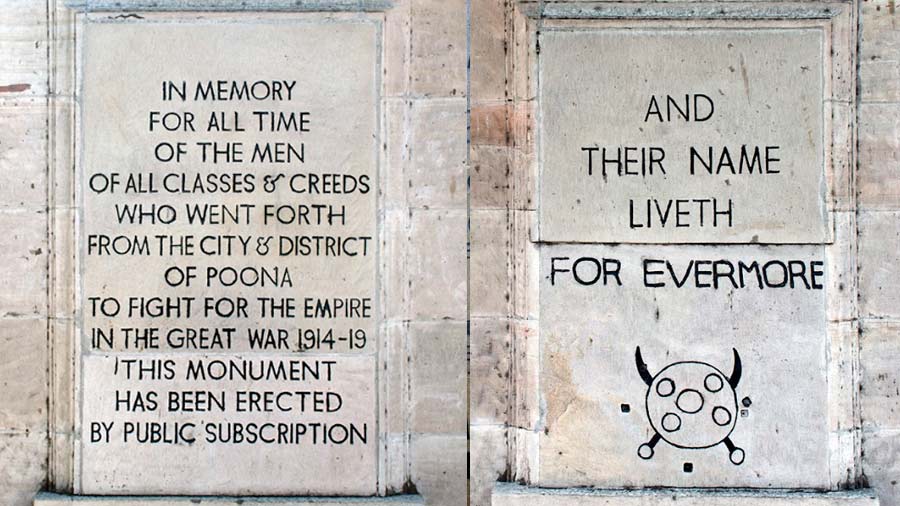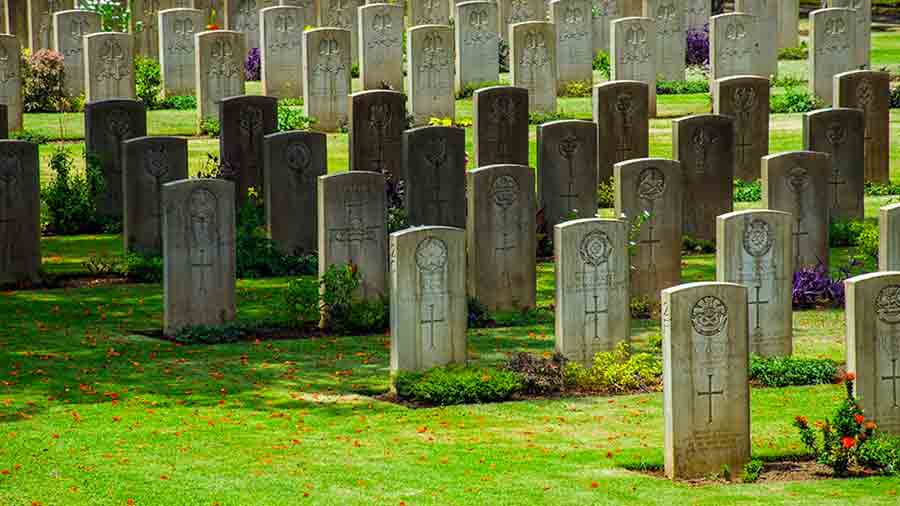Over a million Indian soldiers served the British military forces during the World War I. Over 70,000 died fighting in different war theatres spread across Europe, the Middle East and Africa. Today, numerous memorials and plaques dot the subcontinent in memory of the Indian soldiers who died fighting for the king of a far-away land. Pune, the cantonment town in Maharashtra, houses two such memorials, along with several WWI graves.
Maratha War Memorial
The Maratha War Memorial is a site dedicated to the ‘Men of Maharashtra’ who died in The Great War. The memorial is housed on a triangular traffic island located at the busy intersection of Moledina Road and Dr Coyaji Road. The memorial dates back to 1921 and the foundation stone was laid by the Prince of Wales, Edward VIII. Initially, it was located near Shaniwar Wada, but in 1931, it was moved to its more prominent present-day location.

The memorial dates back to 1921
The stone memorial is topped with a dome and has inscriptions on all four sides, of which two are in English. It mentions that the memorial was erected in memory of the men of Maharashtra who died in the war. It also mentions that the memorial was erected by officers and men of their regiment, along with prince, rulers and the general populace. It ends with the famous war saying, “And their name liveth for evermore”. The second English inscription is a list of the regiments represented by the Marathi soldiers during WWI. The other two inscriptions are in Marathi and are translations of the English ones.
A small inscription at the lower part of the memorial mentions that it was designed by the architects Acott, Bhuta, and Carpenter and was executed by contractor Krishnaji Ramakrishna and Co. The foundation plaque lies at the floor in front of the memorial.
The triangular traffic island housing the memorial has three cannons at its three corners. Interestingly, the cannons outdate the memorial and were captured by the British from the Marathas. One of the cannons have an inscription with the name of Aurangzeb. Historians believe that it was originally a Mughal cannon, captured by the Marathas.
Pune World War I Memorial

The World War I Memorial is 50-feet high
This too is located on Moledina Road near the railway station. Also designed by architects Acott, Bhuta, and Carpenter, this obelisk-styled memorial dates back to 1922. It towers at a height of 50 feet, but recently, the roads surrounding the memorial had been elevated and the memorial has lost its dominating look.

Inscriptions on the memorial
Here also, the base has four inscriptions on four sides. Two are in English and the other two are Maratha translations. It also has the inscription of “And their name liveth for evermore” along with an emblem of two crossed swords and a shield. The second plaque mentions that the memorial is dedicated to the soldiers, irrespective of cast and creed, of Poona (now Pune) town and district who went to the Great War.
Kirkee War Cemetery

The cemetery contains 1,668 WWII Commonwealth graves
Although both the WWI memorials are located in the heart of the city, they are often overlooked by passers-by. On the other hand, the Kirkee War Cemetery is located far from centre of the city. But the huge and well-maintained site can never be overlooked.
At the entrance is a plaque that mentions Kirkee War Cemetery 1939 - 1945. It is basically a WWII cemetery located in the Khadki (previously Kirkee) locality of Pune. It is maintained by the Commonwealth War Graves Commission (CWGC) and contains 1,668 WWII Commonwealth graves. The cemetery is beautifully laid out with the Cross of Sacrifice at the far end. The Cross of Sacrifice is a cross with short horizontal arms and is part of any CWGC cemetery with 40 or more graves.

Kirkee War Cemetery with the Cross of Sacrifice
Incidentally, cemetery also has a WWI connection. In 1962, bodies of 629 World War I servicemen were brought to the cemetery from Sewri Cemetery, Bombay and reburied in the Kirkee Cemetery.
Behind the Cross of Sacrifice are 12 wall-like structures arranged in a curve. They contain the names of servicemen and women who died in either of the two world wars.
Rangan Datta is a mathematics and management teacher by profession and a travel writer and photographer by passion. He has been addicted to discovering off-beat places since his undergraduate days at St. Xavier's College. Blogging and contributing to Wikipedia are his other passions.
